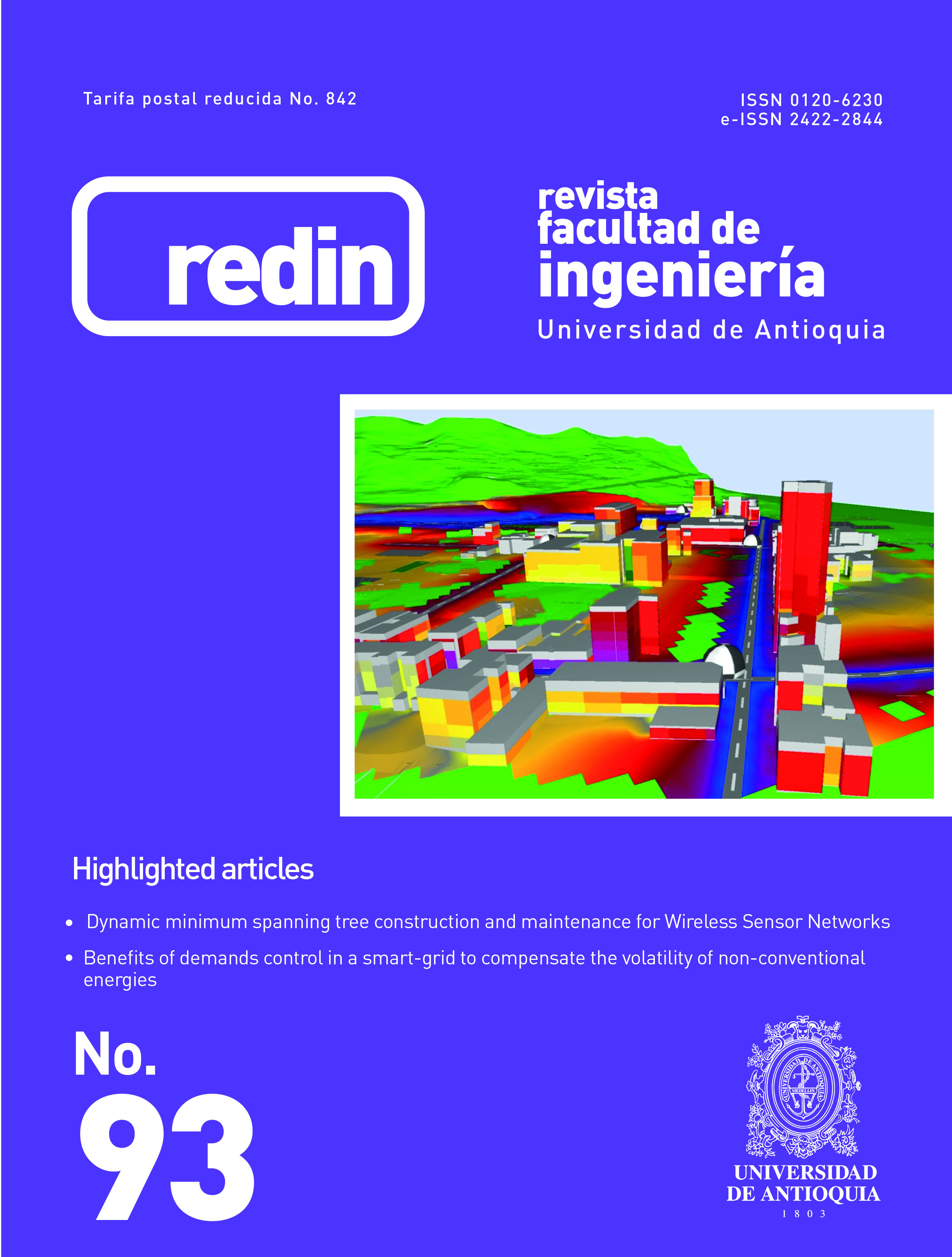Scrum+: un Scrum escalado para la gestión de proyectos ágil de desarrollo de software global con múltiples modelos
DOI:
https://doi.org/10.17533//udea.redin.20190519Palabras clave:
proyecto de desarrollo, dirección de proyecto, globalización, modelo de desarrollo, ingeniería de sistemasResumen
Actualmente, llevar a cabo la gestión de proyectos es difícil en cualquier situación, incluso más en proyectos globales de desarrollo de software, cuyo entorno enfrenta diferentes aspectos que dificultan aún más la gestión de este tipo de proyectos, por ejemplo: falta de coordinación, falta de comunicación cara a cara, diferencias temporales, diversidad cultural y aplicación de diferentes estándares, modelos y enfoques. Con el objetivo de apoyar la gestión de proyectos de desarrollo global de software ágil (DGSA) cuando varios modelos están presentes, hemos definido Scrum+, el cual es una guía basada en Scrum y define un conjunto de actividades, tareas, funciones y criterios para apoyar proyectos DGSA en entornos de multiples modelos. Llevamos a cabo la armonización del enfoque ágil Scrum junto con las prácticas de gestión de proyectos definidas en múltiples modelos, tales como: ISO/IEC 15504, ISO 9001 y CMMI-DEV. Asimismo, la evaluación de la propuesta se realizó a través de: (i) su aplicación en un grupo focal con expertos en diferentes áreas relacionadas y (ii) su evaluación del grado de agilidad mediante el método 4-DAT. Basado en el análisis de los resultados y los comentarios obtenidos en el focus group, se puede considerar que Scrum+ es claro, adecuado y ágil. La guía propuesta aquí puede servir como referencia para estudiar otros aspectos relacionados con proyectos escalados de software ágil.
Descargas
Citas
A. Almutairi and M. R. Qureshi, “The proposal of scaling the roles in scrum of scrums for distributed large projects,” Journal of Information Technology and Computer Science (IJITCS) , vol. 7, no. 8, pp. 68–74, 2015.
L. T. Portela and G. Borrego, “Scrumconix: Agile and documented method to agsd,” in IEEE 11 th International Conference on Global Software Engineering (ICGSE) , Irvine, CA, USA, 2016, pp. 195–196.
LeSSFramework.LeSS.AccessedSep.22, 2018.[Online].Available: https://goo.gl/9UuAGx
The nexus guide. scrum. Accessed Apr. 25, 2018. [Online]. Available: https://bit.ly/2z9JmHU
M.Paasivaara,“Adopting SAFe to scale agile in a globally distributed organization,” in 12 th International Conference on Global Software Engineering (ICGSE) , Buenos Aires, Argentina, 2017, pp. 36–40.
R. Sriram and S. K. Mathew, “Global software development using agile methodologies: A review of literature,” in International Conference on Management of Innovation & Technology (ICMIT) , Sanur Bali, Indonesia, 2012, pp. 389–393.
M. Niazi, M. A. Babar, and J. M. Verner, “Software process improvement barriers: A cross-cultural comparison,” Information and Software Technology , vol. 52, no. 11, pp. 1204–1216, Nov. 2010.
C. Pardo, F. J. Pino, F. García, M. T. Baldassarre, and M. Piattini, “From chaos to the systematic harmonization of multiple reference models: A harmonization framework applied in two case studies,” J. Syst. Softw. , vol. 86, no. 1, pp. 125–143, Jan. 2013.
P. R. Chilito, D. Viveros, C. J. Pardo, and F. J. Pino, “Scrum+: An agile guide for the global software development (GSD) multi-model project managemen,” in IEEE Colombian Conference On Comunications and Computing (COLCOM) , Medellín, Colombia, 2008, pp. 1–6.
N. Kock, Information Systems Action Research An Applied View Of Emerging Concepts And Methods . Laredo, Texas, USA: Springer Science+Business Media, 2007.
J. Kontio, L. Lehtola, and J. Bragge, “Using the focus group method in software engineering: obtaining practitioner and user experiences,” in International Symposium on Empirical Software Engineering , Redondo Beach, CA, USA, 2004, pp. 271–280.
ISO/IEC TR 15504:1998(E). Information Technology -Software process assessment. Parts 1-9 , International Organization for Standardization, 1998.
ISO 9001:2000. Quality management systems - Requirements , International Organization for Standardization, 2000.
SEI,“Capabilitymaturitymodelforsoftware-cmmifordevelopment v1.3,” Carnegie Mellon University, Pittsburg, Pennsylvania, USA, Tech. Rep. CMU/SEI-2010-TR-033, Nov. 2010.
K. Schwaber and J. Sutherland. (2017, Nov.) The scrum guide. [Online]. Available: https://goo.gl/ECDWH5
A. Vizcaíno, F. O. García, and M. G. Piattini, Desarrollo Global de Software . Madrid, España: RA-MA, 2014.
E. Hossain, P. L. Bannerman, and D. R. Jeffery, “Scrum practices in global software development : A research framework,” in 12 th international conference on Product-focused software process improvement , Torre Canne, Italy, 2011, pp. 88–102.
K.L. Then, J. A.Rankin, andE. Ali, “Focusgroupresearch: what isit and how can it be used?” Can. J. Cardiovasc. Nurs. , vol. 24, no. 1, pp. 16–22, 2014.
A. Qumer and B. Henderson, “An evaluation of the degree of agility in six agile methods and its applicability for method engineering,” Information and Software Technology , vol. 50, no. 4, pp. 280–295, Mar. 2008.
Descargas
Publicado
Cómo citar
Número
Sección
Licencia
Derechos de autor 2019 Revista Facultad de Ingeniería Universidad de Antioquia

Esta obra está bajo una licencia internacional Creative Commons Atribución-NoComercial-CompartirIgual 4.0.
Los artículos disponibles en la Revista Facultad de Ingeniería, Universidad de Antioquia están bajo la licencia Creative Commons Attribution BY-NC-SA 4.0.
Eres libre de:
Compartir — copiar y redistribuir el material en cualquier medio o formato
Adaptar : remezclar, transformar y construir sobre el material.
Bajo los siguientes términos:
Reconocimiento : debe otorgar el crédito correspondiente , proporcionar un enlace a la licencia e indicar si se realizaron cambios . Puede hacerlo de cualquier manera razonable, pero no de ninguna manera que sugiera que el licenciante lo respalda a usted o su uso.
No comercial : no puede utilizar el material con fines comerciales .
Compartir igual : si remezcla, transforma o construye a partir del material, debe distribuir sus contribuciones bajo la misma licencia que el original.
El material publicado por la revista puede ser distribuido, copiado y exhibido por terceros si se dan los respectivos créditos a la revista, sin ningún costo. No se puede obtener ningún beneficio comercial y las obras derivadas tienen que estar bajo los mismos términos de licencia que el trabajo original.










 Twitter
Twitter